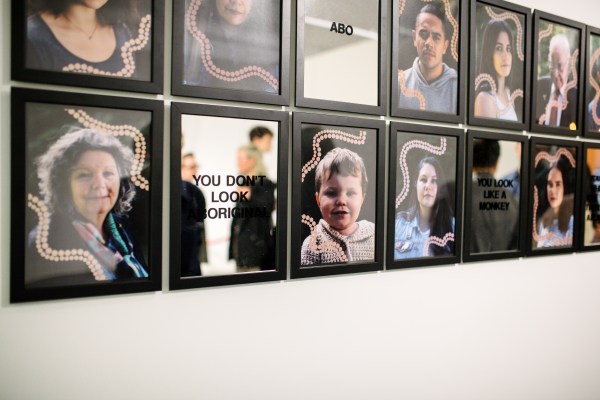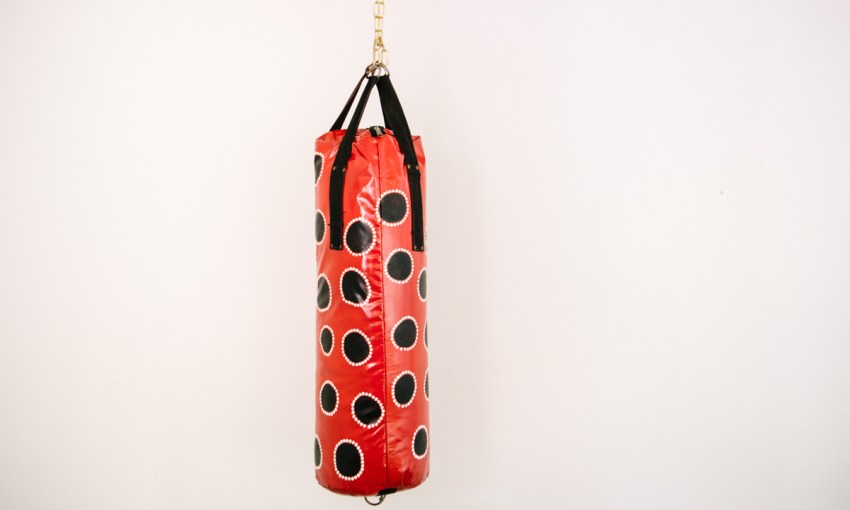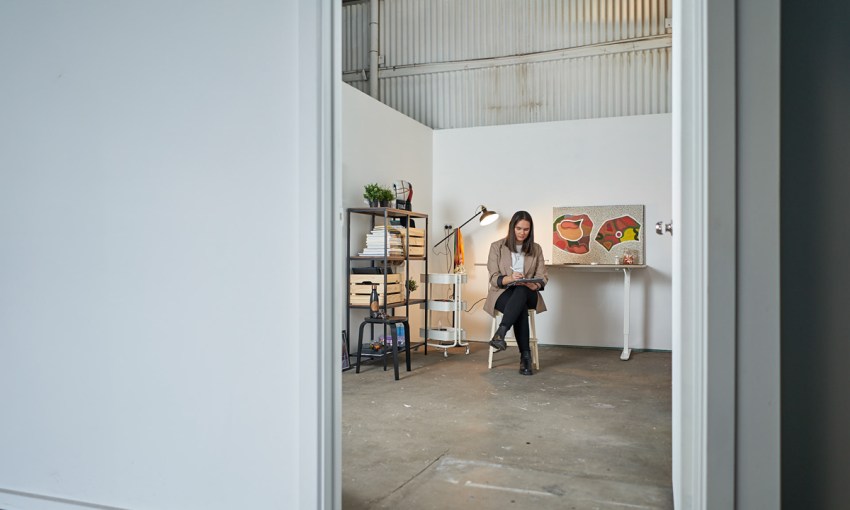As part of ACE Open's 2020 South Australian Artist Survey, Indigenous artist Carly Tarkari Dodd has created a work that aims to dismantle damaging assumptions about Aboriginality.
Confronting racism through art with Carly Tarkari Dodd
Adelaide-born Kaurna, Narungga and Ngarrindjeri artist Carly Tarkari Dodd is one of the eight artists selected to participate in ACE Open’s 2020 South Australian artist survey, titled If the future is to be worth anything.
The exhibition, which opens at ACE on 12 September, sought out South Australian artists who the arts organisation felt were creating work of an international standard, giving them the space to explore their individual practices.
For Carly, this meant reflecting on the ways she is seen, and not seen, as an Aboriginal woman in Australia.
“Earlier on in the year I was out with friends and I’d received a few comments. Things like, ‘Are you really Aboriginal? You don’t look Aboriginal’,” Carly says.
“I’m fair and don’t look like a stereotypical Aboriginal person – but what does an Aboriginal person look like?”
From this frustration, she created a work of mirrors covered in racist language sitting alongside portraits of Aboriginal Australians framed in dots.
Once people consider the glass, Carly says, she wants them to be confronted with Australia’s presupposed notions of Indigenous identity.
“The portraits I’ve used, they’re all Aboriginal people of all different shades,” Carly says.
“I wanted to make it very diverse and make people think ‘Oh, these people are all Aboriginal? I thought they were darker or have bigger features.’ But no race looks the same.”

Carly Tarkari Dodd’s Sticks and Stones (2020) Photo: Morgan Sette
If the future is to be worth anything runs from 12 September through to 12 December, and, alongside Carly and the artists the initiative also includes arts publication fine print and arts organisation Tutti Arts.
Its aim is to demonstrate a range of critical perspectives from artists within the state, and how they look towards the future.
Carly saw this as an opportunity “make a big impact” and deviated from her weaving and painting practices, moving toward photography.
“With photography, you can be really intimate and personal compared to painting,” she explains.
“And all the mirrors are eye-level so you have to look at it. It’ll be quite interesting – seeing how people will react. I’m looking forward to that as well. Seeing peoples’ reactions.”
Race is a focal point of Carly’s work. In a previous exhibition, Shackled Excellence at The Mill, she created sculptural works juxtaposing Aboriginal sportspeople’s victories against social injustices.

Carly Tarkari Dodd’s painted punching bag from ‘Shackled Excellence‘ (2019)
“Shackled Excellence enabled me to portray the stories of success that rose out of racism,” Carly says.
“As I grew up I saw more and heard more examples of racism through my family, friends and media. My strength kept growing and I wanted to share many stories of Aboriginal people.”
Carly drew from the decades of notable instances of racism and bigotry within Australian sport – from the contemporary case of Adam Goodes’ early retirement due to continual racist heckling, back through to the threats Cathy Freeman received from the Commonwealth Games for waving both the Australian and Aboriginal flags, and Nicky Winmar’s famous defiance against racist taunts from football crowds in the early ’90s.
Carly grew up in a sports world, and so the intersection of Indigenous sporting excellence and the racism it confoundingly draws up out of society enflamed her.
“I think Adam Goodes and everything that went on with him really made me think it’s such a big issue, and the country is so divided on it. Why should they be divided on something? It’s just wrong,” she says.
“It just made me a bit more vocal about certain topics and just wanting to express it with my art.”

Carly’s hand-made trophy from Shackled Excellence – an homage to her dad, a keen footballer, and brother Travis, the Socceroos’ first Indigenous goalscorer
Carly’s art practice began at a young age. She was 10 when she learned weaving from Ngarrindjeri weaver Ellen Trevorrow.
The art world, like the sports world, comes with its own challenges for First Nations people. In Carly’s own experience, she has seen the narrow expectations placed on Aboriginal artists.
“I even get asked ‘Can you do this dot painting?’ and I’m like, ‘No, that’s not what I do, but here’s an artist who does that.’ They think that Aboriginal art is just one thing,” she says.
“We’re not.”
It’s “pretty cool” to be considered by ACE Open as one of South Australia’s most exciting up-and-coming artists, Carly tells us, but she wants there to be more Indigenous artists championed, and more spaces made specifically for their art to be made and exhibited.
If, as ACE’s exhibition title posits, the future is to be worth anything, Carly thinks Australia needs to look into her mirror.
Ace Open’s If the future is to be worth anything opens Saturday, 12 September and runs through ’til Saturday, 12 December. For more information, see the event page.




